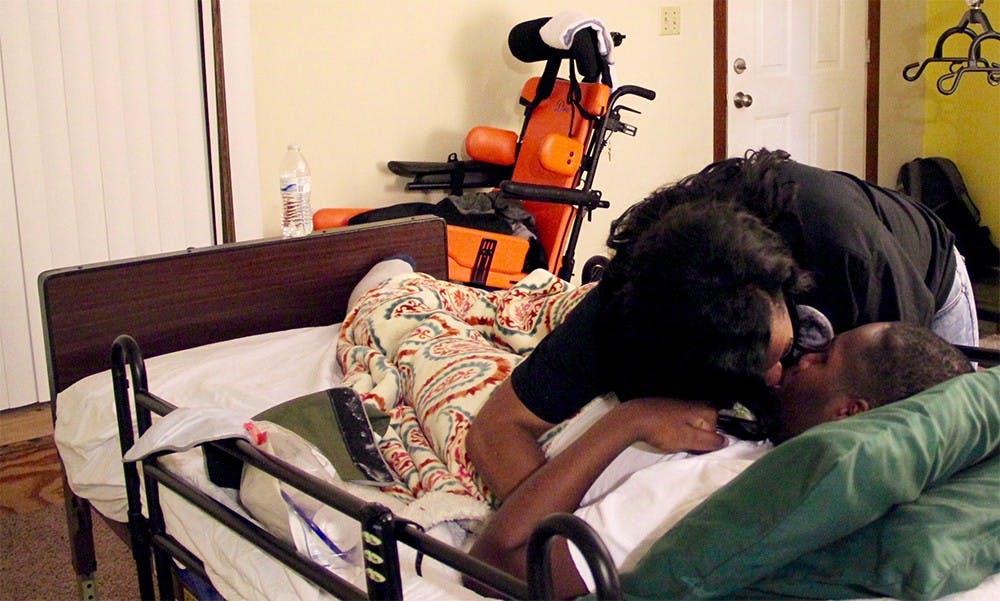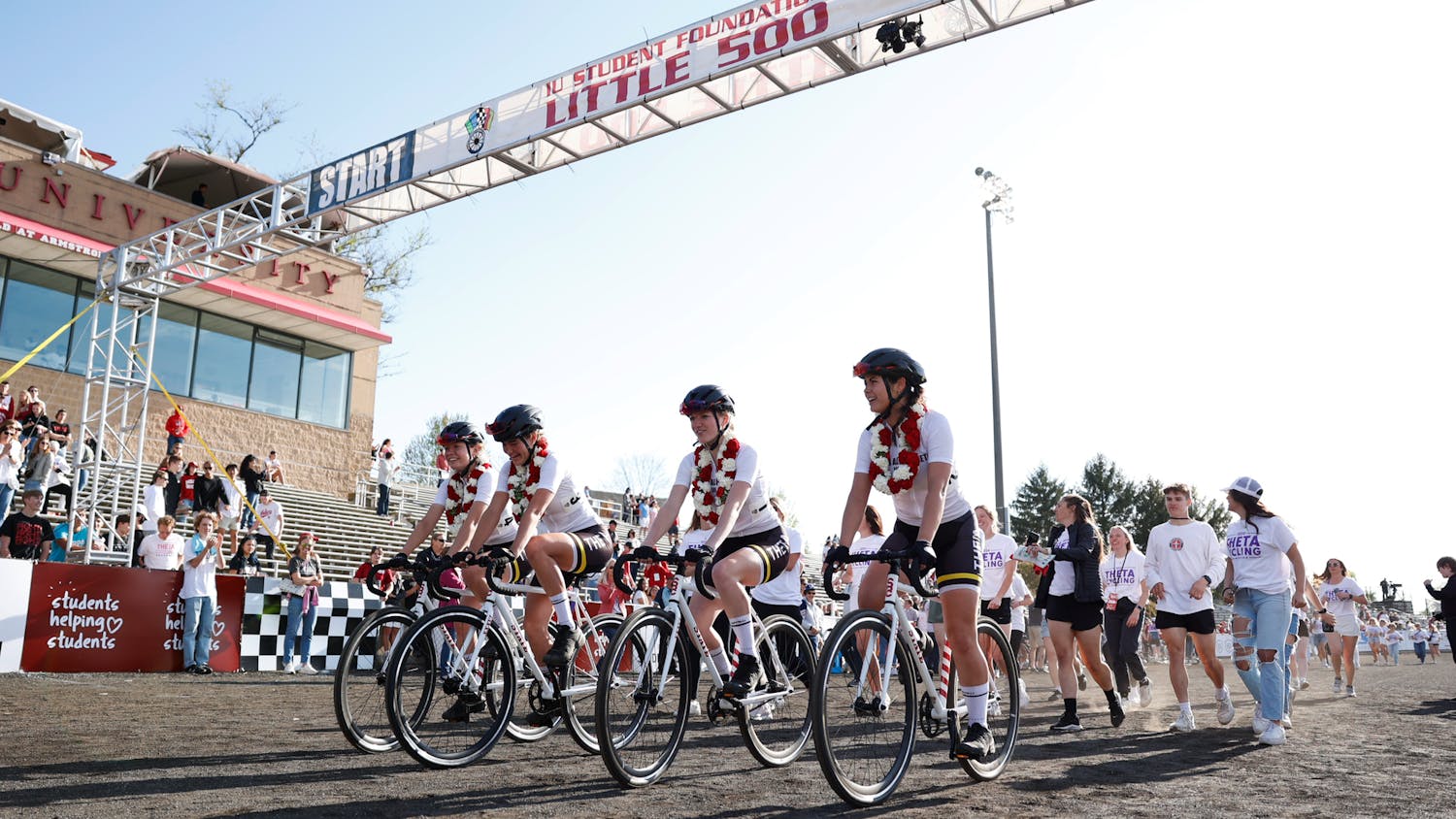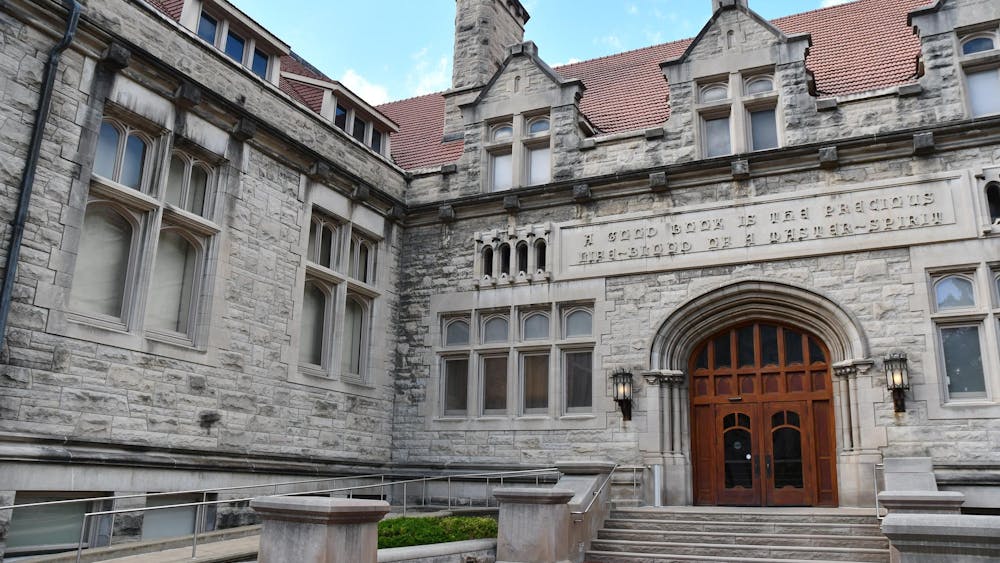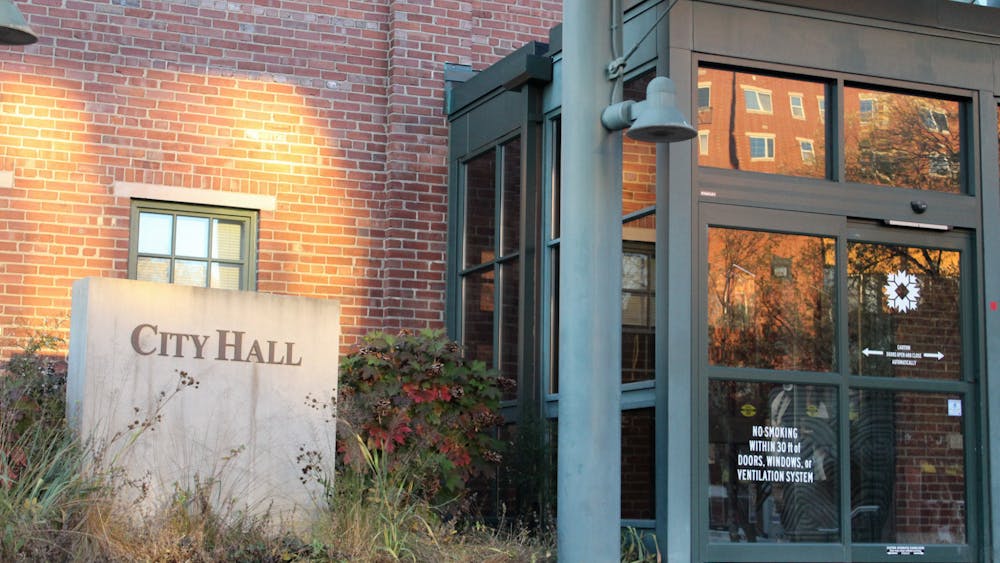INDIANAPOLIS — The house is filled with sounds as she expertly unwinds the plastic tube. Teenage boys roughhousing in the basement, women gossiping about cute men and then a small click as she connects the tube to the port leading into her son’s stomach.
Without breaking conversation with her friends, DeAndra Yates pours a purée of watered-down banana mush into the measuring container and watches as it’s sucked down the twisting pipe and into the 15-year-old’s body.
Leaning over her teenager’s hospital bed, she puts her face close to his. Dre Knox’s eyes float to the ceiling, his head lolling to the side as his mother kisses his cheek.
“I love you,” she says.
Dre doesn’t respond. In fact, it’s been more than two years since a word has crossed his lips. Ever since the birthday party, when bullets sliced through a crowd of teenagers, his only way of communicating has been through groans, incoherent cries and sometimes a nod.
He’s not the only quiet one. Witnesses have also stopped talking since the incident.
DeAndra, though, has spoken to whomever will listen: police, reporters, activists and other parents.
It’s been more than two years now, she will proudly tell anyone, and she still hasn’t shut up.
***
It was Feb. 1, 2014, when chaperones asked a rowdy group to leave a birthday party. Minutes later, someone opened fire into the house filled with about 35 minors. Dre, then 13, was the only person hit. The bullet penetrated the bottom left side of his skull, causing severe and likely permanent brain damage.
Though doctors told DeAndra that Dre likely wouldn’t live, she persisted in treatment, adding her son to America’s growing list of gun violence survivors.
So far this year, 34 people have been killed with guns in Indianapolis, according to information from the Indianapolis Metropolitan Police Department.
In the United States, an average of 297 people are shot each day, according to the Brady Campaign to Prevent Gun Violence. Forty-eight of those victims are minors. Seven of those minors are killed, leaving 41 survivors. Some of them live with puffy scars, some with PTSD, some with feeding tubes and hospital beds.
In the wake of these acts of violence, distraught parents are left to contemplate hospital bills and maybe funeral arrangements, case files and court dates.
The dead, of course, can’t advocate for themselves or anyone else. But Dre’s case shows that even survivors are sometimes left unable to testify, relying on parents, witnesses and friends to speak on their behalf.
As of April 5, Indianapolis police had been able to solve nine of this year’s homicides along with clearing an additional eight cases from previous years. But Sgt. Catherine Cummings said those rates are not indicative of the amount of work put in by police.
“The police cannot solve cases without the help of the community,” Cummings said. “We can make arrests and the charges can be dismissed simply because witnesses don’t continue to work with us, so there’s no longer enough corroborating evidence.”
Though the numbers of people killed with guns haven’t been increasing during the past decade in Indianapolis, this reluctance to cooperate with law enforcement has been problematic over the past several years, Cummings said.
“We deal with this often,” she said. “We have ways that we can work with people so they feel comfortable coming forward with their information.”
Cummings added that there are times when officers will have a pretty good idea of who committed a crime and are still unable to make an arrest.
“Solving crime takes a whole community,” she said. “It takes a whole community working together.”
***
Three days after the shooting, DeAndra sat in front of reporters while crying in a bright pink shirt.
“My son was the only child hit,” she told them. “I don’t know why. I may never understand why my baby ... Why he was chosen.”
Her voice escalated into a sob.
“I don’t know,” she said. “But all I’m saying is, if you know something, tell something. So no other mother has to sit here and give a press conference, begging and pleading for somebody to talk.”
More than two years have passed, and still no one has said anything.
In that time, the 33-year-old mother of two has learned a lot.
She’s learned the names of medications and what they’re used for: Nexium to protect his stomach from ulcers. Neurontin for the pain. Baclofen to help stop the spasms. Mucinex to clear his congestion.
She’s learned how to use a sling attached to a small crane to lift Dre’s 6-foot, 181-pound frame from his wheelchair to his bed. How to carefully stretch his fingers so they don’t get cramped.
She’s learned how to give a sponge bath, hook up the respirator machine and change adult diapers.
Stacks of paper sit in her kitchen. Forms for fundraisers, a pamphlet about an anti-violence nonprofit, spreadsheets with information on the foundation she started, Purpose for My Pain.
She has a bill for $55,000 from when Dre had a seizure and needed to be airlifted to the hospital. She keeps the folded piece of paper in her purse because she doesn’t know what else to do with it.
On her computer, she’s saved email exchanges between herself and the police. On her phone, she’s saved the records of her calls. She’s reached out to law enforcement for updates on her case at least once a month since Dre’s shooting. She says in 26 months, she’s only heard back nine or 10 times.
Each response is the same: no suspects, no new information, the leads have all gone cold.
Detectives tell her witnesses from the party claim they don’t remember anything. They stand firm in this forgetfulness, even when DeAndra recounts conversations with them in the days and weeks following the shooting.
She says these same people had cried to her and told her that they were sorry, told her Dre had been vomiting blood and they hadn’t known what to do. They described what the shooter looked like and promised to point him out if they saw him again.
“And then they suddenly got amnesia, I guess,” DeAndra says.
So, faced with a wall of silence, she learned how to be her own advocate.
She’s talked to the Indianapolis Star, CNN, Fox, WISH-TV, Ebony Magazine and the Indianapolis Star again. She stood behind Obama in the White House as he announced his executive action against gun violence.
She now says gun sense, rather than gun control. While she weeped at that first press conference, more recent camera appearances feature softer tears. She answers reporters’ questions succinctly but powerfully. She keeps her cause in the spotlight. She calls herself “the mom that won’t shut up.”
Thousands, maybe millions of people have seen her and heard her story. She imagines the shooter knows who she is.
“When that loser sees me on the news and sees my son drooling in a wheelchair, what is he thinking?” she asks. “What could he be thinking?”
In addition to raising awareness on the importance of gun safety, she says she hopes the images might eventually appeal to the humanity of the criminal or inspire compassion in the witnesses. Maybe one more article, one more news spot, and they’ll finally be compelled to talk.
***
Sometimes the consequences of informing police seem scarier than if you just kept your mouth shut, said Anthony Beverly, executive director of Stop the Violence Indianapolis.
When he talks to Indianapolis youth about what some may call snitching, he said he is shocked at the stories.
Like when a girl was suspended from school but didn’t want her parents to know. She hid in the bathroom all day, hoping teachers wouldn’t find out. Another student, a new girl, saw her there and asked classmates about it. When a teacher overheard the conversation, the girl was pulled out of the bathroom and sent home. The new student, the inadvertent snitch, was bullied so severely in the following weeks that she had to transfer.
Or when a 16-year-old boy told his mother he was going outside with a friend. When they left, the friends began to fight and the mother’s son ended up dying from a bullet wound. When she showed up to court to testify, though, she was confronted by a group of young men taking pictures of her.
“Yeah, you don’t want to do that,” they said. So she went home.
“In an urban setting, you can have people that will actually see a murder and will not say a word,” Beverly says. “It perpetuates the violence because the people who are selling and gang banging know that they’re going to get away with it. Nobody’s going to court.”
***
DeAndra used to be obsessed with reports of other victims. She still keeps a list in her head.
Deshaun Swanson was killed in a drive-by shooting last year. He was 10 years old. His 18-year-old cousin was murdered Sunday.
Ashton Harting was murdered on Martin Luther King Jr. Day. He was 13.
Jaylen Johnson was found dead in an alley. He was 16.
DeAndra used to call the parents to let them know they weren’t alone. She would meet them, cry with them and give them advice. She never attended a funeral. That’s the one thing she said she could never do.
Even without seeing the too-small caskets, the looks on the parents’ faces became too much for her. “Too heavy,” she says.
Now she only goes when a family reaches out to her, like Alex Gomez’s family.
Driving to the Gomez’s home, DeAndra is anxious.
She fidgets with her phone and touches up her hair and pulls at her shirt, wondering what to say to a father whose 21-year-old son was murdered three days earlier.
Pulling alongside the house, she composes herself. She’s supposed to be the face of strength, the sign that it gets better.
“Okay,” she says. “Okay. Okay. Let’s go.”
Inside, a white cross decorated in roses leans against a wall. Two women and a man, Alex’s father, greet DeAndra with half-smiles and hugs.
DeAndra takes a seat in the kitchen, across from Mr. Gomez. On the table between them sits a can of Coors Light and two memorial candles.
Mr. Gomez is a soft-spoken man. For the most part he sits quietly, looking at the table as his relatives share their story.
At first they talk about their pain.
“You probably won’t ever heal,” DeAndra tells them. “You just have to take it one day, one breath, one second at a time. A part of you is gone.”
She tells them to save their receipts and bills, because they can get reimbursed for ambulance bills and funeral costs with victims’ assistance funding.
The family tells DeAndra they feel helpless.
“That’s another thing I wanted to talk to you about,” DeAndra says, leaning forward. “Being a minority and advocating for your child.”
If you don’t call they won’t help you, she says, adding she only just got the police report from Dre’s shooting in the mail. Call once a month even when they don’t call back, she encourages. Fight for your son, she tells the father, banging her fist on the table.
“It’s been two years and I still kick, scream, yell, cuss, fuss,” DeAndra says.
As the words tumble out, mixed with trembles and tears, she grabs this stranger’s hand.
“Your son was shot in the head,” she says. “But don’t let his story end there. That’s not how this story is going to end.”
For a moment, it’s quiet. The candle burns lower and the tears subside into sniffles.
“Can I hug you?” DeAndra asks.
In the middle of the living room, the parents embrace. The tears begin to flow again, and now the father talks.
“It’s so hard,” he says into DeAndra’s shoulder. “It’s so hard.”
***
On the way home from the Gomez’s, DeAndra says she recently started therapy.
Friends have been telling her to go for awhile. She heard it helps people open up, to get unsaid things off their chests.
She thinks it helps her youngest son. He’s always been the quiet one in the family.
For her though, she doesn’t expect it to do much. After all, she’s never had trouble speaking up.






